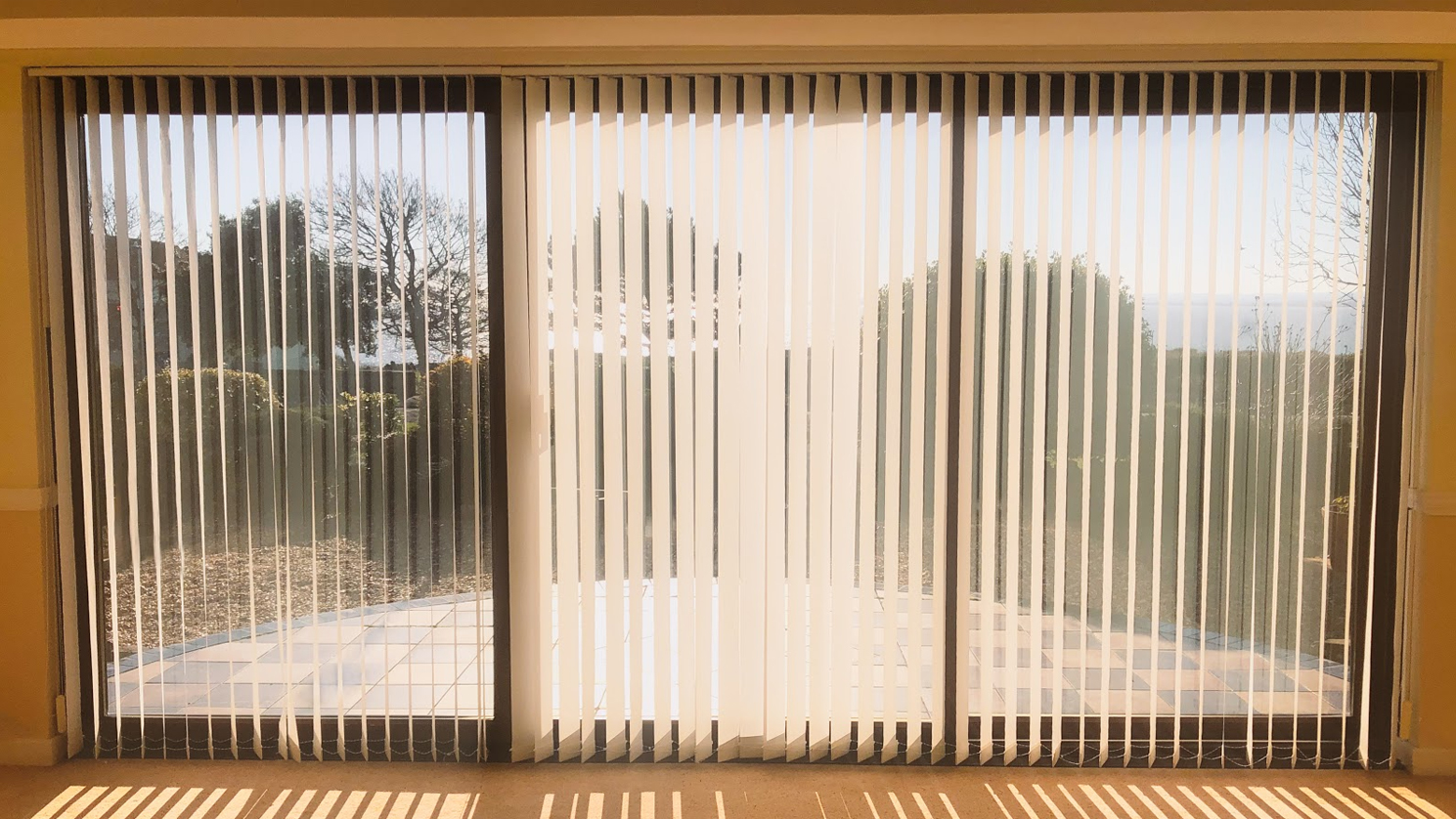The Best Types of Blinds by Room
In our introductory article, we mentioned that some of our customers install different kinds of blinds throughout their homes, depending on the needs and their stylistic approaches to each room. This guide will go into further detail about what is involved in these choices, and the drawbacks and benefits for installing different kinds of blinds in specific rooms throughout the house.
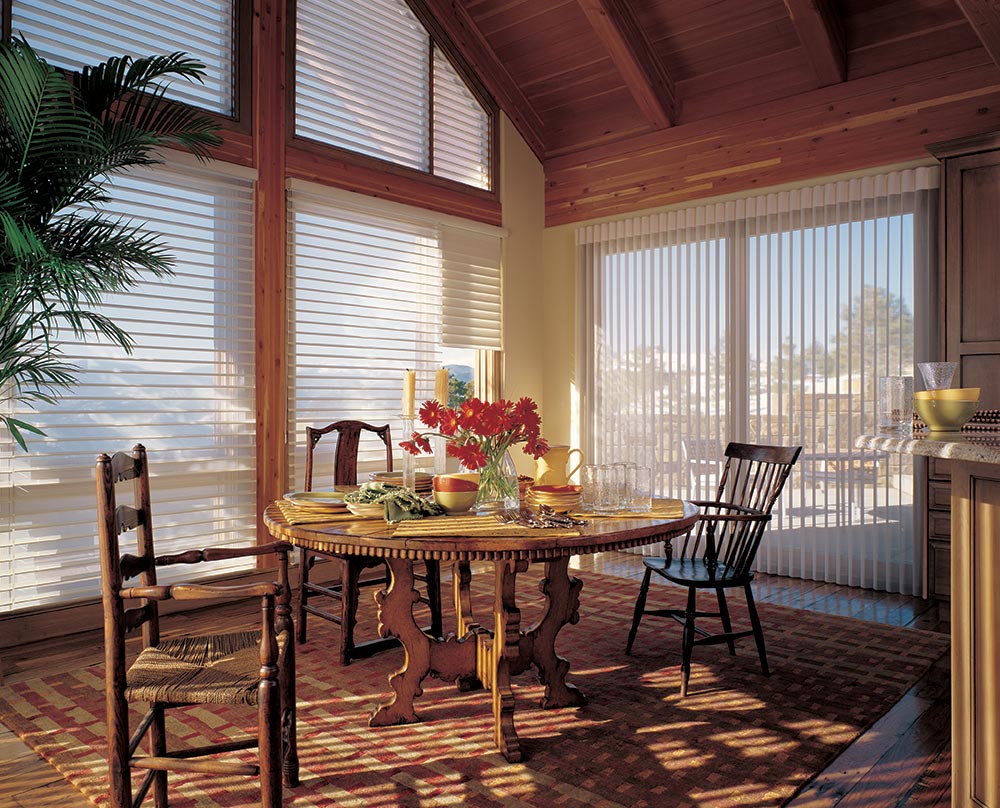
Many rooms can benefit from a combination of different types and styles. Hunter Douglas offers Whole House Solutions, and combinations of the Silhouette® and Luminette® style can really transform a living space. The Silhouettes® are a great way to manage light and privacy while getting the most out of the view surrounding your home. Luminette® privacy sheers are a vertical solution that diffuses light and is perfect for large windows and sliding glass doors. Available with a motor, the shades can open and close on schedule and with the touch of a button.
Many of our customers express similar concerns when choosing blinds for their bedrooms- they want a product that will help them to get a better sleep. Expensive mattresses, humidity control, and even diet changes can be a great help, but what about something as relatively easy as a new set of blinds? A good set of window blinds for the bedroom can keep the light out well into the morning, if that is your preference. We find that some types of blinds are naturally incredible at creating dark spaces, while others are serviceable with proper installation and/or added features for filling in gaps through which light can enter a room.
Blockout blinds sometimes referred to as blackout blinds, are extremely popular in bedrooms because they are designed to fill up the entirety of the window space, letting in the least amount of light possible. Duette® blinds are stylistically different, but function in a similar way to prevent light from entering the bedroom. They appear folded, almost like the rubber of an accordion, while most blackout styles are straighter and sleeker.
Using aesthetically pleasing styles like Roman blinds and vertical blinds in the bedroom, while not as popular, can work well for the sleeper who does not need total darkness or is willing to make some simple adjustments. Installing additional liners or coverings, as well as choosing certain fabric shades that are more opaque, can make these styles almost as effective at keeping the light out as their blockier counterparts. Among our repeat customers, Ado Wrap Blinds are especially popular in the bedroom because they come in a range of light filtering options and present with a unique style.
Wooden Venetian blinds are popular and convenient but aren’t exactly known for their ability to block sunlight. Those interested in Venetian blinds can opt for certain privacy models made with fewer holes for the strings and heavier creases, both of which allow them to do a better job of allowing well-deserved sleep.
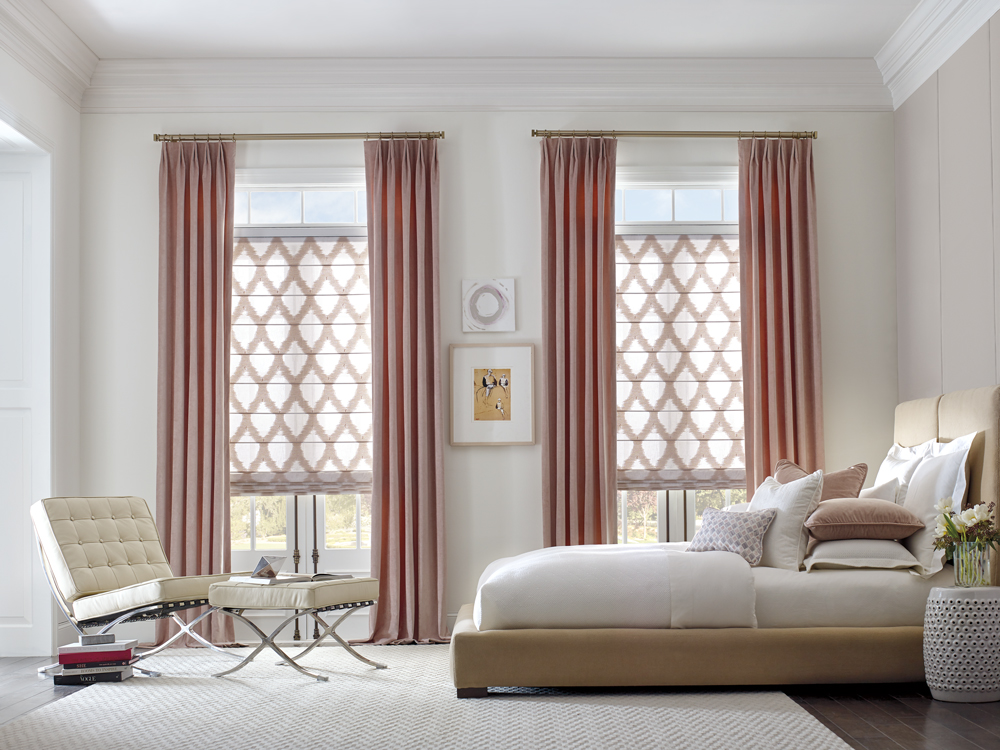
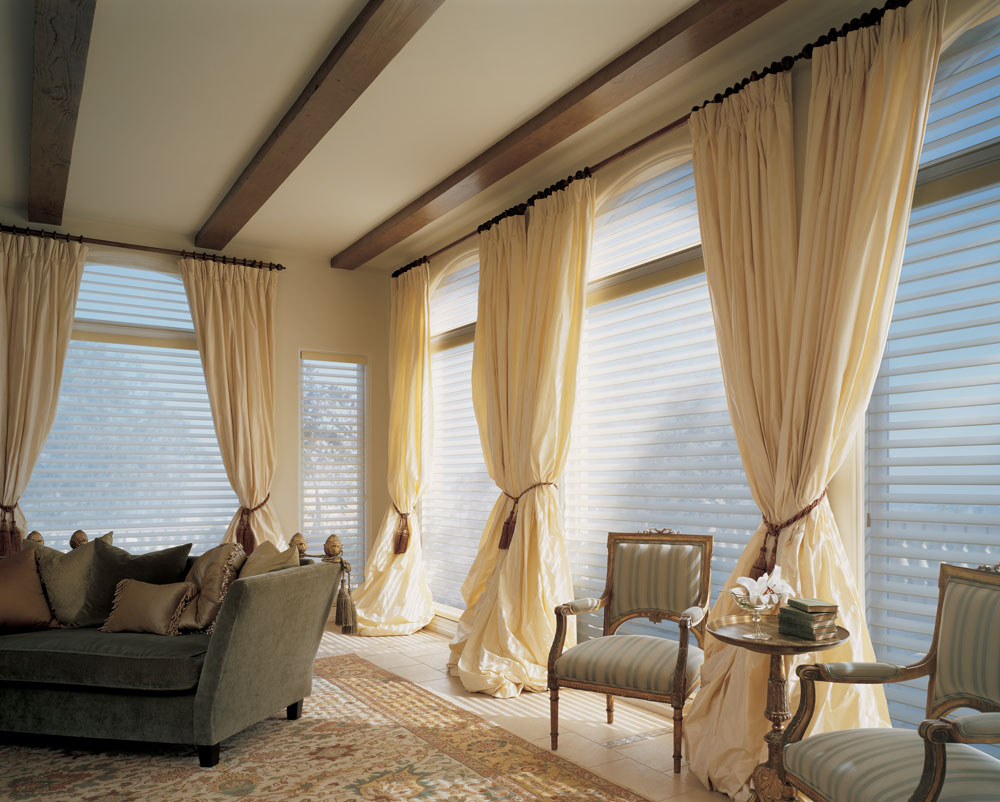
The living room is often the first room that guests encounter upon entering your home. It can set the tone for how the rest of the home is received, and for that reason, we find that style is more of a consideration for our customers when choosing blinds for their living rooms. Additionally, living rooms tend to be front and center in most homes, and blinds represent an easy and convenient way to create privacy in a central space.
Vertical blinds are more popular in living rooms and kitchens than anywhere else in the home because of the privacy that they offer, as well as their flexibility. Watching television, talking with friends on the couch, or finally getting around to that yoga session on the carpet- all these tasks might compel different amounts of natural light, and allowing homeowners to manipulate even the angle at which light enters makes vertical blinds a common choice for living room windows. Our Cadence® Soft Vertical Blinds remain a popular choice because they add a little bit of texture to the vertical blind, which is often touted for convenience.
Blackout blinds do well in the bedroom because of their ability to keep the light away but are also commonly found in the living rooms of gamers, movie-lovers, and those who generally prefer dark spaces. While not as adaptable to different tasks as their vertical counterparts, they can create the perfect setting for watching a movie on a lazy Sunday afternoon!
The quality and elegance of Roman blinds make them the go-to choice for those who value style. Perfect for smaller windows, these pricier blinds can easily add texture to a living room, which is important considering how much time is generally spent in this part of the home. We find that wooden blinds are not as popular, even if they do feature in some living rooms. In a space with the right ambiance and color scheme to match, a set of wooden blinds can help to create a natural, no-nonsense look that is perfect for the center of a home.
Kitchen blinds are often overlooked in a home, and most customers consider the ease by which they can be kept clean alone when choosing blinds for their kitchens. Some are content to install a simple set of Venetian blinds, or blockier vertical blinds, both of which can be cleaned easily and rarely stain. But for those interested in adding a touch of style to the kitchen, a room in which so much unplanned time is spent, there are options more pleasing to the eye.
Wooden Venetian blinds, for example, are often used in kitchens with earthy tones to create a more natural appearance. Using any wooden blinds in the kitchen does require some planning ahead, however, because of the material’s tendency to retain moisture. Models treated with vinyl will hold up in most kitchens, and avoiding the use of wooden blinds in windows that are directly next to faucets or other wet areas can help to avoid the problem altogether.
Concerns about moisture are even more important in bathrooms where mold can settle on just about any wet surface. Faux wood blinds, rather than the vinyl-treated iterations more commonly found in drier kitchen spaces, are becoming more popular in bathrooms because of their natural resistance to moisture. Venetian or horizontal blinds remain popular simply because of how easy it is to clean them- they just offer a simpler appearance.
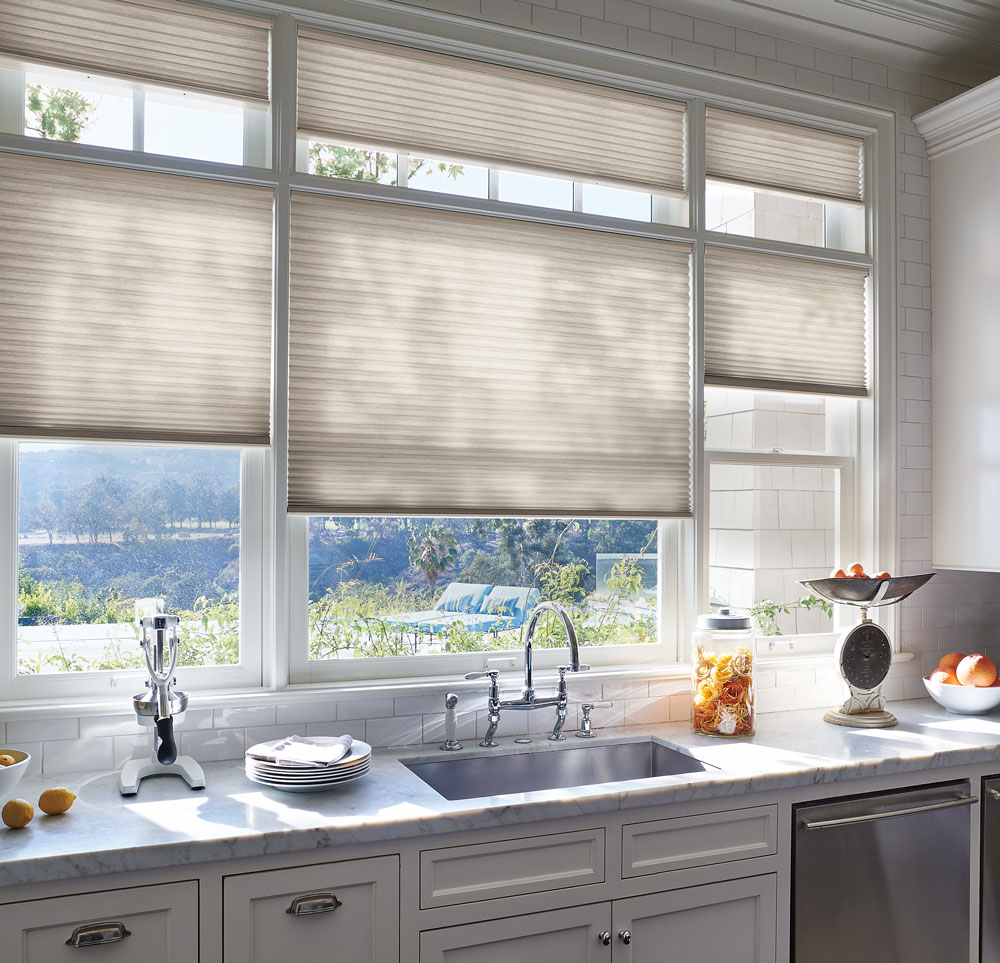
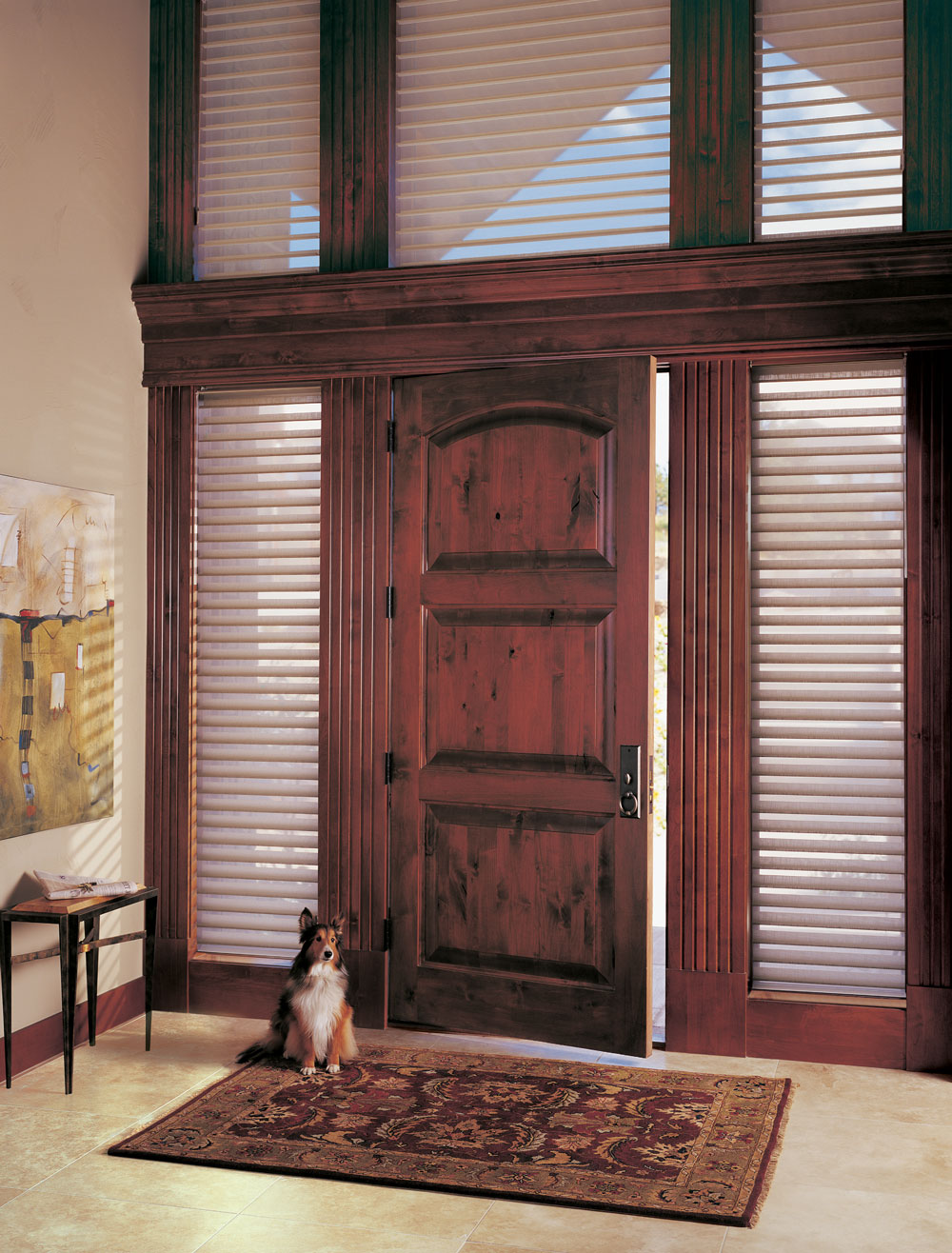
Considering which blinds are best suited for areas of the home that we pass through each day, but do not spend much time in, can seem like a conundrum. What do customers typically look out for? The ability to let as much light as possible into these utilitarian spaces is, we think, the biggest priority. It is important to have strong light when doing things like folding clothes and putting the leash on the dog before a walk, and especially when greeting guests upon their entering the home.
Aluminum blinds are popular with our customers in these areas, especially for the front door and surrounding windows. They let in a high degree of light (when needed, of course), and they are lightweight and easy to manage, which comes in handy around high-trafficked areas like entryways. Finally, they are relatively easy to clean, which makes them resistant against muddy clothes and shoes! Wood and faux wood styles are also a popular choice, especially for those who want to create a more stylistic impression for guests entering their home. They just require a little more maintenance than aluminum models do.
For laundry rooms and other utility rooms like workshops and home offices where we need to see as much as possible, simple horizontal blinds made from vinyl tend to do the job well. We are seeing more and more faux wood styles in areas like the laundry room and the kitchen where damp conditions are more likely to be found.



